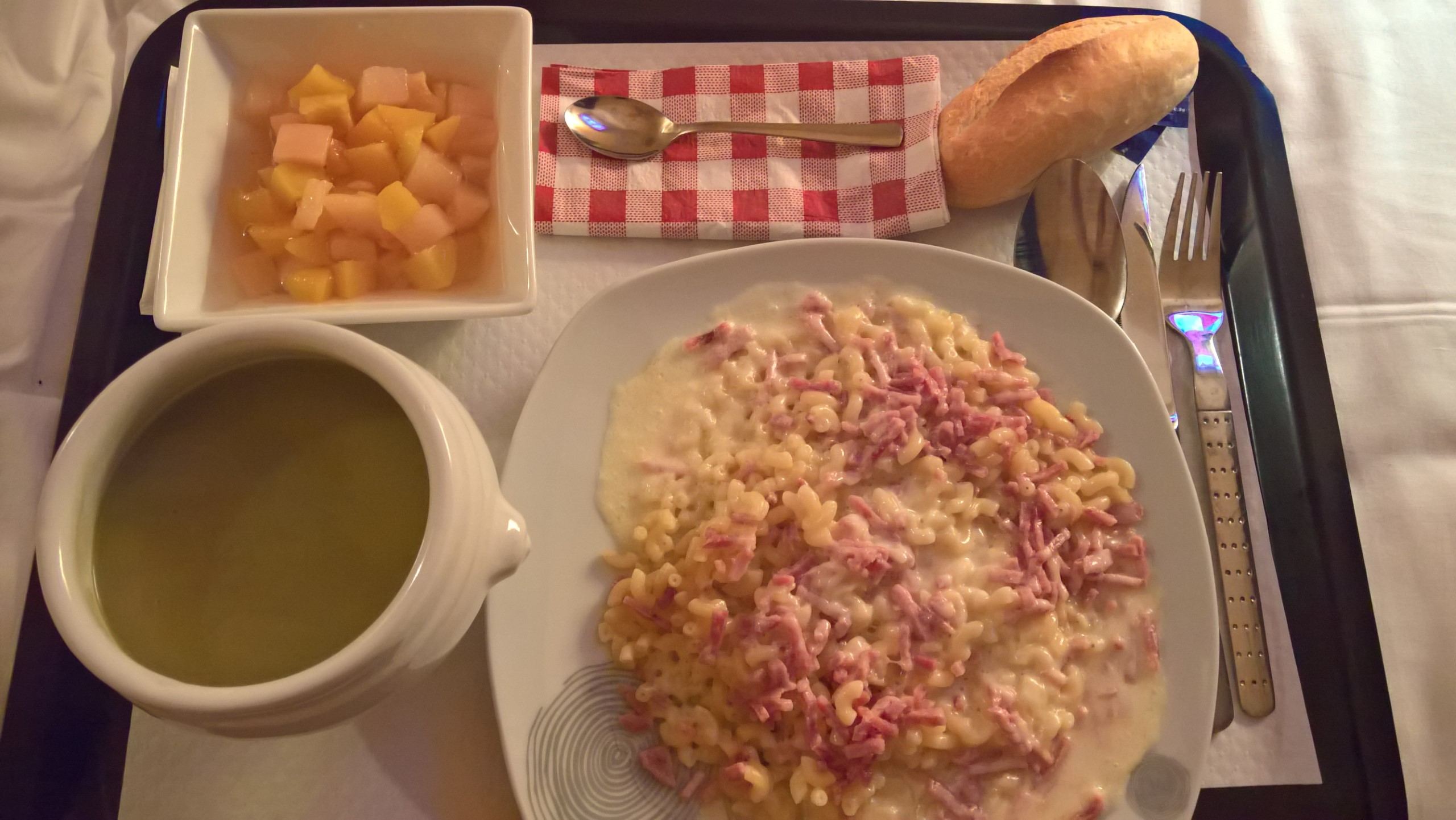Second day of the journey, the energy of the beginning is still there.
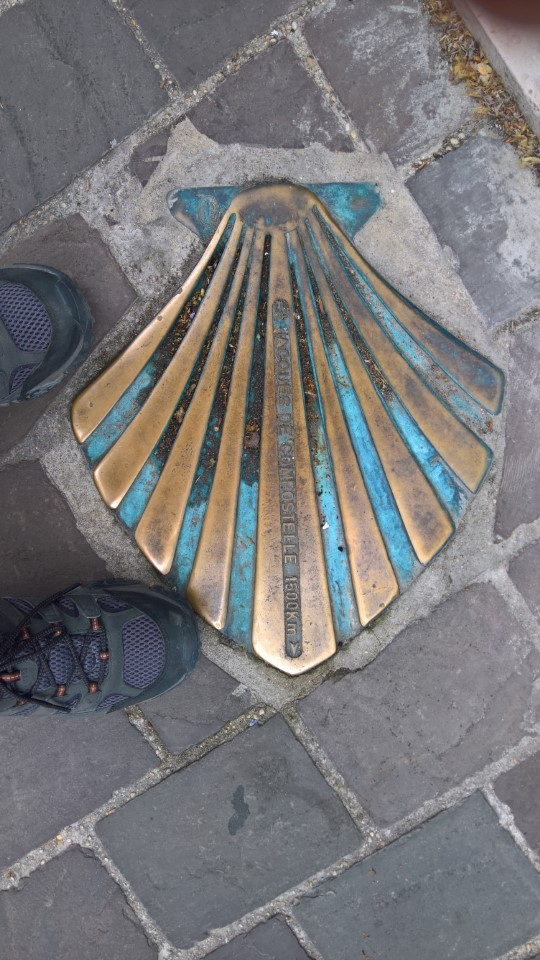
I found a cool shell! It says 1500 km, maybe if I were a bird, my guide says 1800.
The theory is that the lines on the scallop shell represent the many ways converging towards Compostela. Compostela is next to the Atlantic coast, so this seashell is common food there. Pilgrims would come back from the pilgrimage with a scallop shell attached to their bag as symbol of their accomplishment. Nowadays, many pilgrims attach this symbol on their back from the beginning. But I prefer the old way, I will only attach one to my bag once I have arrived.
So, the point of convergence should point towards Compostela, right? Well this was my minor 1800 km long pet peeve, many of the shells that indicate the way do not point towards the right direction. Zoom in on the top picture for an example.

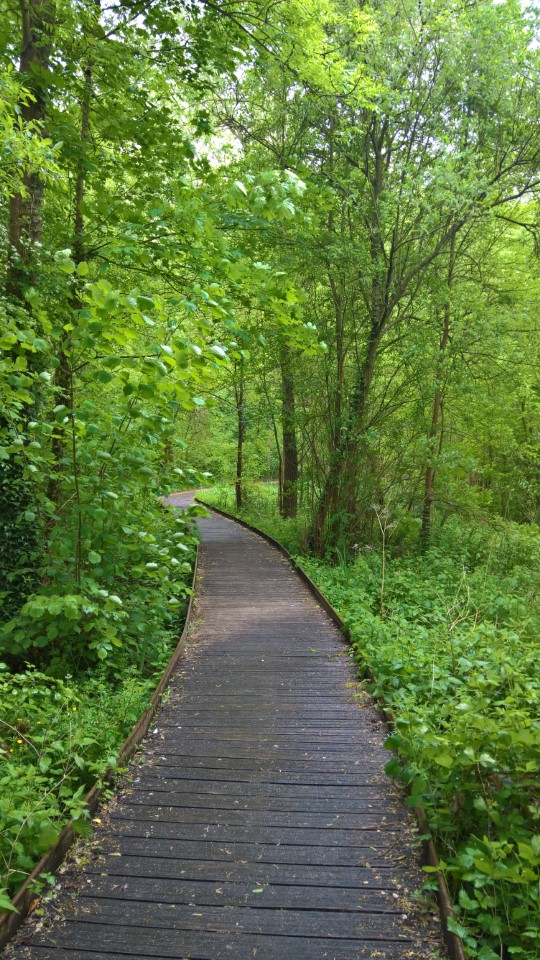
The Notre-Dame-de-Bonne-Garde basilica in Longpont-sur-Orge was founded in 1031, then part of the highly influential Congregation of Cluny (1200 locations and 10 000 members at the peak). This religious organization shaped a significant part of the European Middle Ages: religious reforms, politics, economy, philosophy, ancient literature copying, architecture and liberal arts between the 10th and the 12th century.
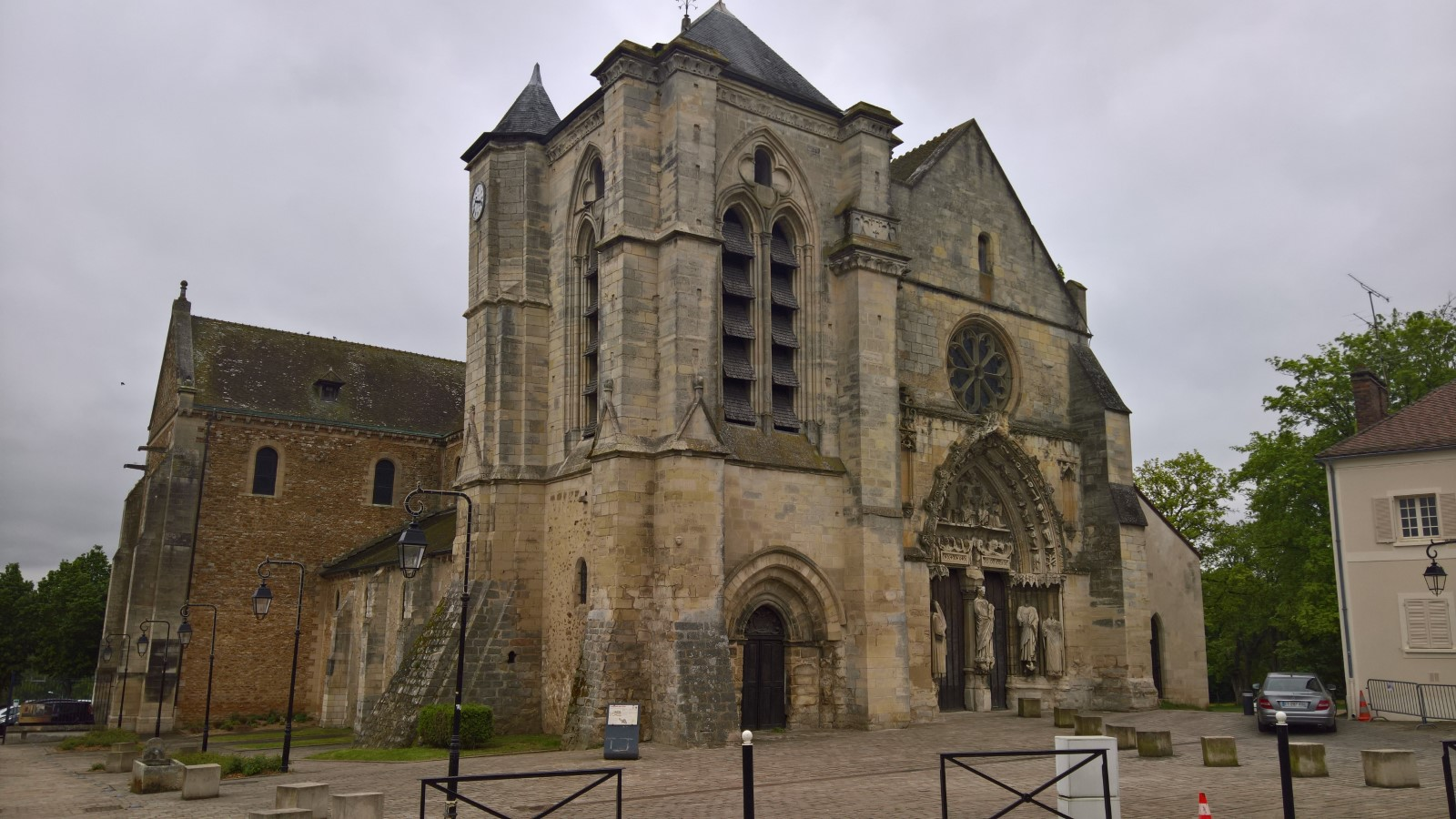
I failed to identify this neoclassical castle.
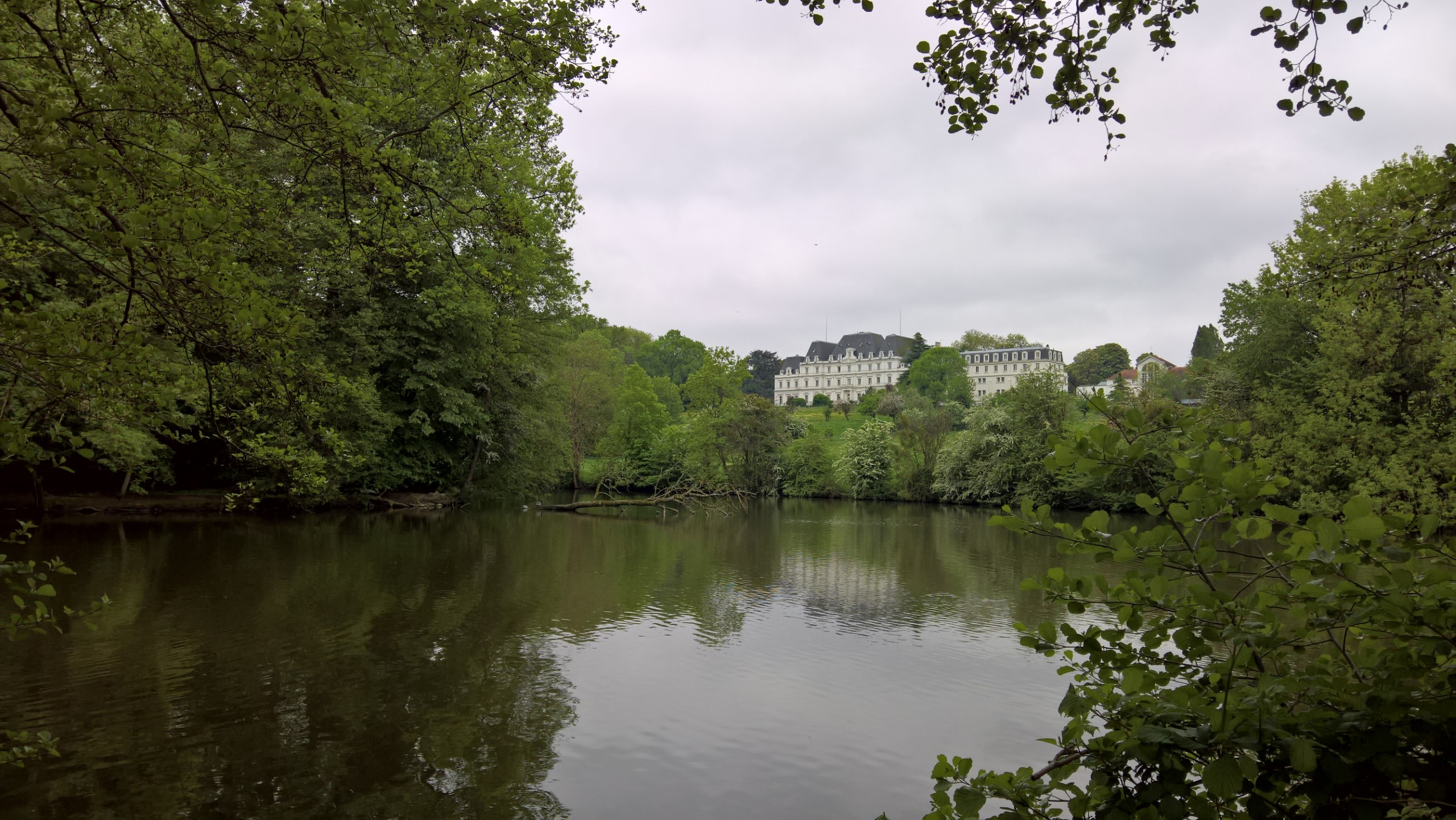
The way between Paris and Tours is not a major one in France. There are many more Frenchies starting from Vézelay or Le Puy-en-Velay, which go through gorgeous natural regions of France, so I can’t blame them. But my way was to start from my home.
Since it’s not a major route, the infrastructure for pilgrims is lacking. Marks may sometimes be few and far between, and there are not many of those unbeatable quality/price pilgrim stays, at least not in 2018. So for this night in Arpajon, I had to stay at an “over-budget” roadside hotel, eating macaronis with my trucker mates.
